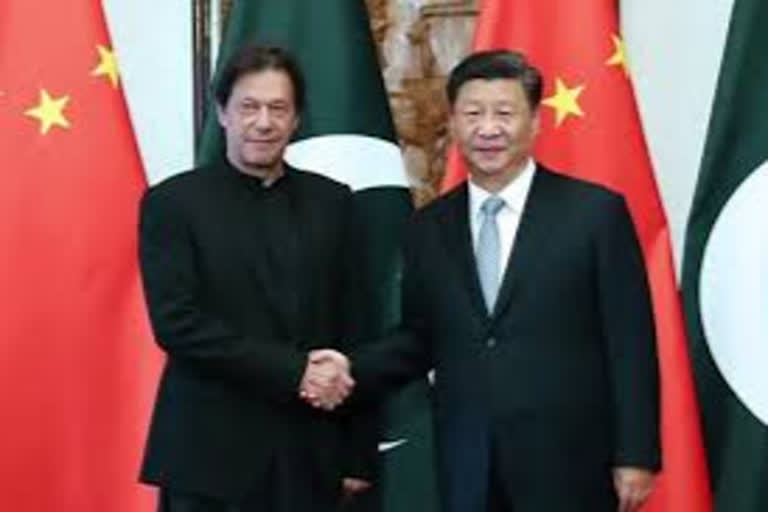New Delhi: 'All-weather friends' China and Pakistan’s interest align with respect to the border issues they face with India.
In this, China’s 'neighbourly' help with space technology is significantly bolstering Pakistan’s military confidence against India. What China does is to enable Pakistan access 'military-grade' signals which allow for extremely high-resolution imagery.
From the military standpoint, it signifies two things - very high and almost pin-pointed target accuracy. Secondly, with Beidou-supplied accurate coordinates, most weapon platforms can home into their targets with precision.
In other words, it also means growing China-Pakistan military space collaboration.
“Whatever Pakistan’s space programme has achieved is due to active Chinese help and collaboration. Besides civilian applications of space technology, China lets Pakistan access its ‘military-grade’ signals, which becomes a force multiplier for the latter,” says Ajey Lele, security and a strategic expert from the Manohar Parrikar Institute for Defence Studies Analyses (MPIDSA), a leading Indian think-tank.
Read: Pakistan ISI colonel posted in China’s military HQ
“For China, Beidou is a very major project. While everyone uses it in China, it is one of the major backbones of China’s Belt and Road Initiative (BRI). At the same time, there is a certain amount of parity now with India which is using its own navigation system called NAVIC which also has good strategic utility,” Lele says.
Controlled by the Peoples Liberation Army (PLA), Beidou is an indigenously-developed Chinese Navigation Satellite System that is on the verge of completion next month when China places the 59th satellite of the Beidou network system—and the last—in space weeks from now.
With Beidou, China will be the fourth geography in the world with a global navigation network, the other three being United States’ GPS, Russia’s Glonass and the European Union’s Galileo.
Interestingly, Pakistan was the first nation to deploy Beidou which will also enable applications for increasing accuracy of lethal ballistic, hypersonic, and cruise missile systems.
While India and Pakistan share a particularly ‘hot’ border known as the Line of Control where ceasefire violations and incessant cross border firings are normal, China shares an unresolved border issue with India where there is no agreement as to where the actual border lies, leading to a lot of ‘incidents’ the last two of which happened as late as May 5 in eastern Ladakh and May 9 in northern Sikkim.
Read: Pakistan needs new approach to move forward as a democracy: Ex-envoy Haqqani
It is also in the border that China and Pakistan’s interests align vis-a-vis India.
The US-China Economic and Security Review Commission in its latest report “China’s Space and Counterspace Capabilities and Activities” talks of China’s military space strategy that is focused on five major conflict types, one of which is called ‘Joint Border Area Operations’.
The report says, “Chinese military theorists anticipate that in the event of a border war, India would be unlikely to attack until it had amassed superior forces at its forward bases. As such, the priority mission of Chinese space assets during these operations would be to provide early warning intelligence of hostile enemy deployments and ensure China’s leaders were not caught off-guard by a potential Indian surprise attack.”
“After the outbreak of hostilities, the priority mission of China’s space forces would be to provide reliable satellite communications to combat units in the mountains and provide combat commanders with imagery intelligence,” the report adds.
While Pakistan has a dedicated space development entity called Space and Upper Atmosphere Research Commission (SUPARCO), it has not been able to achieve much on its own.
In 2019, China and Pakistan have strengthened their space cooperation by inking an agreement on crewed space missions between the China National Space Administration (CNSA) and SUPARCO. They now plan to set up a China-Pakistan space committee that will have the specific mandate of all collaborations and issues.
China has launched at least four Pakistani satellites Badr I (1990), PakSat IR (2011), PRSS 1, PakTes 1A (2018).
On the other hand, China is a fast-growing space power. It successfully launched 38 space launch vehicles in 2018, putting about 100 satellites in orbit. In 2020, it has plans for more than 40 launches.
Also Read: India rejects China's allegations that Indian troops trespassed across the LAC



